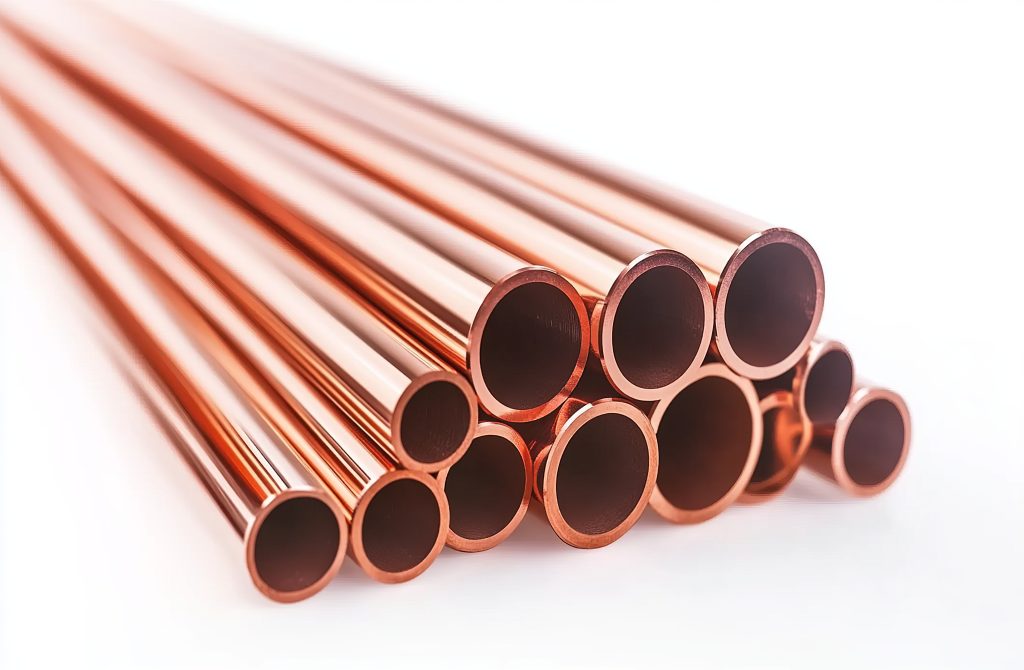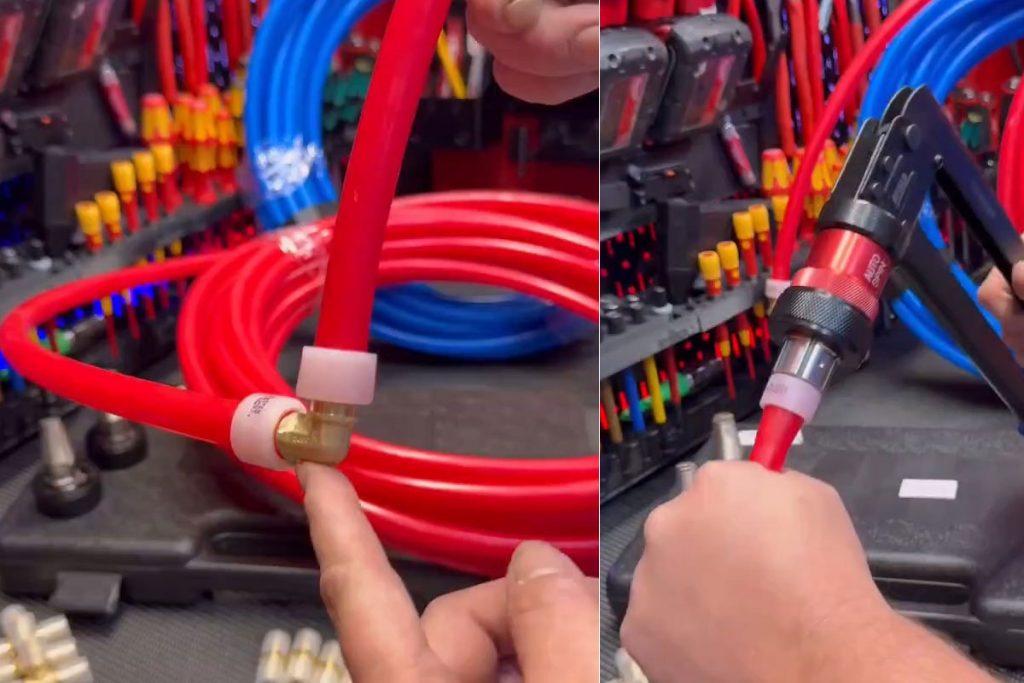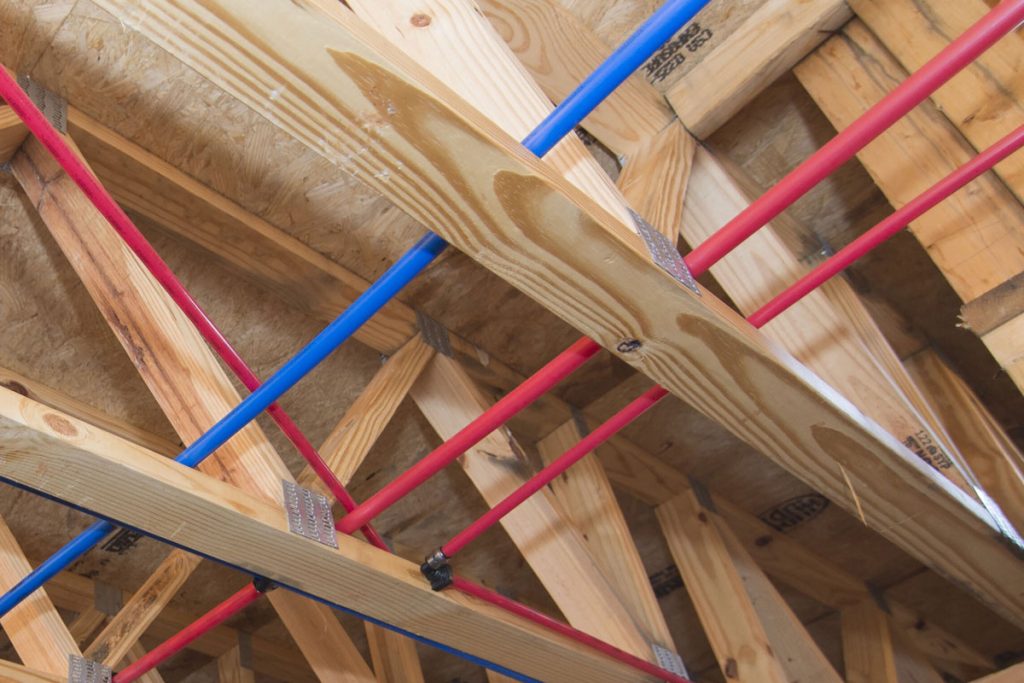Copper piping has been popular in the plumbing industry because of its durability, corrosion resistance and ability to handle both hot and cold water. Traditionally, soldering is used to connect copper pipes and fittings, a process involving high heat to melt metal to create a watertight bond. While soldering has always been practical, as technology develops, modern plumbing offers a wider range of copper fittings options that are just as reliable and often faster and safer to use.
Whether you are about to repair a small home or upgrade an outdated system, alternative copper pipe fittings provide a safer and easier connection method. In this article, we’ll cover some of the most popular types of copper pipe fittings and their specific uses to help you have a better understanding. Check out PlumbingSell’s wide selection of plumbing supplies to find the right fit for your copper piping projects.
Table of Contents
What is soldering?
Soldering is a traditional method used to join two pieces of metal. In the plumbing industry, it is typically used for copper pipe and fittings. The process of soldering is joining metal parts together by melting a filler metal alloy with a lower melting point into the joint. Soldering can create a strong, watertight seal that’s been trusted by professionals for decades.
However, effective soldering requires training and can still be time-consuming. Not to mention, such actions require a torch and cause fire hazards, which can be very dangerous when working in tight quarters or places where heat is not recommended. In addition to this, pipes that are too close to a wall may be impossible to install without damaging the walls with an open flame.
Like other types of pipes, copper pipes have various types of fittings for soldering, from tees and elbows to plugs. Make sure that you have the proper copper pipe connectors for your installation, as soldering is a permanent and irreversible process.
Different types of copper pipe fittings
Copper fittings are important for plumbing systems to ensure a secure connection between the copper pipe and fittings. Modern plumbing offers a variety of copper pipe fittings in different sizes that help eliminate the need for soldering. Whether you are replacing an existing soldering copper connection or connecting PEX to copper, there’s a fitting that fits your needs.
Push-fit fittings
Copper push-fit fittings are a type of copper fitting that allows quick and easy connection of pipes without the need for soldering or tightening. These fittings work by using a push-fit mechanism, where the pipe is simply slid onto the pipe and locked into place. Copper push-fit fittings are considered one of the most beginner-friendly options and are commonly used for emergency repair and maintenance.
Most of the push-fit fittings are applicable to various materials of pipes, such as PEX, copper, and CPVC. This has made them a popular option for those who are considering switching from copper piping systems to PEX tubing. But it’s important to notice that even though they are easy to install, push-fit fittings tend to be more prone to leaks than other types of fittings.
End Feed Fittings
End feed fittings are a traditional type of copper pipe fitting that requires soldering. But they’re still important to understand when comparing with no-solder copper fittings options. As the name suggests, the pipe is inserted into the fitting to a certain depth and then soldered around the edge to create a durable and reliable connection.
They are available in a wide variety of sizes and styles, such as elbows, tees, couplings and more. Even though end feed fittings are not no-solder by design, many copper pipe fittings are still common choices for various plumbing applications.
Press fittings
Press fittings are another popular no-solder solution that can securely connect copper pipes. Copper press fittings are a type of copper fittings that allow for quick and easy connection of copper pipes. These fittings are slipped over the pipe and then compressed using a specialised press tool to create a permanent and reliable seal.
By using copper press fittings, you will save a lot of time on both preparation and installation. They don’t require the pipes to be entirely dry and are easy to install with simple steps. Except for the safer installation process, press fittings are also more durable and reliable with consistent crimping.
Available in a wide range of sizes, like other types of copper pipe fittings, press fittings also include elbows, tees, couplings, etc. These fittings are also compatible with many other materials, so if you’re working with mixed piping, you can still use a fitting for PEX and copper with the right adapter.
Compression fittings
Compression fittings are also one of the most popular no-solder options for copper tubing systems. They offer a reliable and secure connection using only basic tools; a plumber’s wrench works just fine. Compression fittings are compatible with various sizes and types of copper fittings to fit your specific needs.
To install a compression fitting, loosen the nut on it and then slip it into place on the pipe, making sure the pipe goes all the way in. Then, tighten the nut to create a tight and leak-proof seal.
Why Skip the Soldering for copper pipe?
Soldering has been the traditional method for connecting pipes and fittings for a while, but it still comes with a few drawbacks, including fire hazards, time-consuming preparation and the need for specialised tools and training. If you are working in tight spaces or older homes, using a torch can be dangerous. That’s why many professional plumbers and DIY homeowners now prefer no-solder copper fittings like push-fit, compression or press fittings.
The no-solder fittings have largely eliminated the need for open flames, making your installation process safer, faster and more DIY friendly. Both copper pipe compression fittings and push-fit copper pipe connectors don’t require the pipe to be drained completely, which could save you a lot of time, especially in urgent situations.
Unlike the soldering method, which is normally only recommended for alloy materials like copper, the no-solder fittings can be used with mixed-material systems. Suppose you are using both PEX and copper pipes and are wondering how to connect them; the push-fit fittings can be one of your top choices. Whether you are looking for a quick repair or outfitting a full remodel, these innovative copper pipe fittings offer professional results with less hassle. Check out PlumbingSell’s various copper fittings options to get the best fit for your projects.
Conclusion
Connecting copper pipes no longer means you’re limited to using a torch and solder. With modern copper pipe fittings like push-fit, press and compression fittings, you can achieve durable, watertight seals in a faster and more safe way. These no-solder copper pipe fittings are especially useful for tight spaces, emergency repairs, or working with mixed piping systems like PEX and copper tubing.
Whether you are replacing a leaking joint or planning a DIY plumbing upgrade, using the right copper pipe connectors can make a great difference. Explore PlumbingSell’s wide selection of copper pipe and fittings to find everything you need. No matter the size or scope of your project, we are here to help you build with confidence and without the flame.



